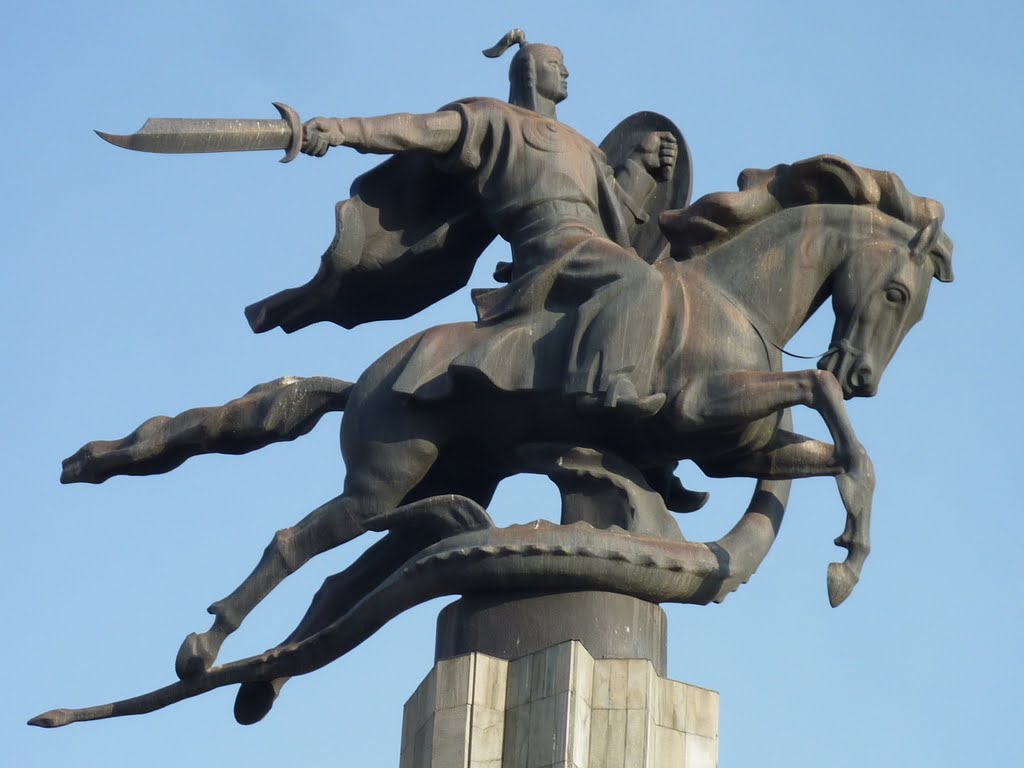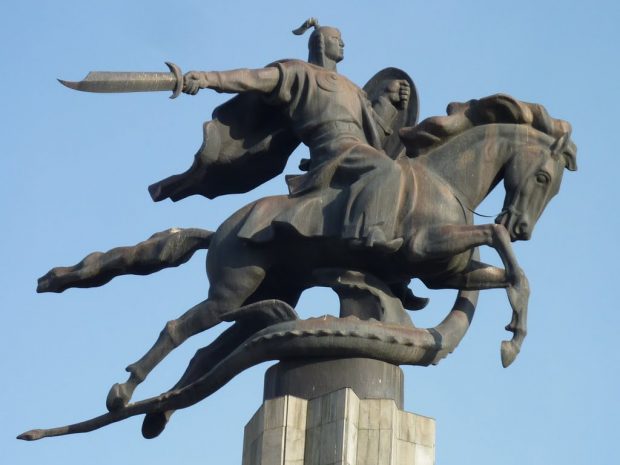
The National Heritage of Kyrgyzstan: Manas
The brightest pearl in Kyrgyz literature is the national epic “Manas,” and its eponymous main character – the hero who united the Kyrgyz. “Manas” is listed as the intangible cultural heritage of humanity by UNESCO. This epic consists of over half a million lines of poetry and is the longest epic in the world. “Manas” is twice as long as the Sanskrit epic “Mahabharata,” and even longer than the Tibetan “Epic of King Geser.” “Manas,” as recorded by storyteller Sayakbai Karalaev, has 500,553 lines of verse. The epic consists of 3 parts: “Manas,” “Semetei,” and “Seytek.”
Manas – He Who United The Kyrgyz.
The epic traces the beginning of the state’s history. “Manas” is an important source for the study of ethnic history and ethnocultural relations in Kyrgyz, and is a source of more than one hundred ethnonyms of such people as Shibee (Shiwei), Solon, Kara-Kytai, Manju, and Naiman. “Manas” imprinted in their lines, information about the economy and merchants of the Kyrgyz. It refers to almost all the routes of the Silk Road.
The epic begins with the birth of the hero Manas. Even in youth, Manas (with his father) participated in confrontations with the Chinese and the Kalmyks, for which he received the respect and love of his people.
Afterwards, the hero becomes a holy Hyzr, and moves away to live with his family in the Central Asian expanse. “Semetei,” the second part of the epic, describes what happened to the Kyrgyz people, while Manas lived in other lands.
The Chinese invaded their land and imprisoned Manas’s best friend, other heroes, and the warriors. Manas learns about these events, and returns to defend his people. After his victories against the Chinese, and then with the Afghan Khan, Manas leaves again with the hermit, to discover the highest wisdom in life.
The last part, “Seytek,” describes the marriage of Manas and the birth of his children. Manas dies, and the reader learns the details of his funeral: The Kyrgyz people built a tomb for Manas, decorated with precious stones and metals, out of gratitude. Along with the hero’s death, his heroic legacy is passed on to those worthy receivers of “Manas.”
The epic holds everything, from a description of the military confrontation, to Kyrgyz religious beliefs, in an episode of Manas’s marriage to the daughter of a Turkish Khan. “Manas” describes how, in moments of acute danger from invaders, women abandoned their household affairs to heroically defend their homeland.
The transmission of such a voluminous and old epic required epic storytellers called the Manaschi. They are professional “People’s Artists” who have mastered the poetic-musical telling of Manas.
Modern scientists have not reached a consensus about the origin of the story. They hypothesize that it comes from the history of the Kirgiz in the IX century. Soviet linguist and literary critic Viktor Zhirmunsky – believed that the historical background matches the conditions XV-XVIII century, even though it has more ancient ideas.
Soviet cultural historian, Doctor of Philology, Professor Eleazar Meletinsky indicates that “Manas” is not mythical (as are many epic tales of the Turkic peoples of Siberia), but historical.
In Kyrgyzstan, there are many places named in honor of the epic: The Manas International Airport outside Bishkek, a university, and even a cinema. The brightest pearl to bear its name must be Asteroid (3349) «Manas» discovered by Soviet astronomer Nikolai Stepanovich Chernykh in 1979.



